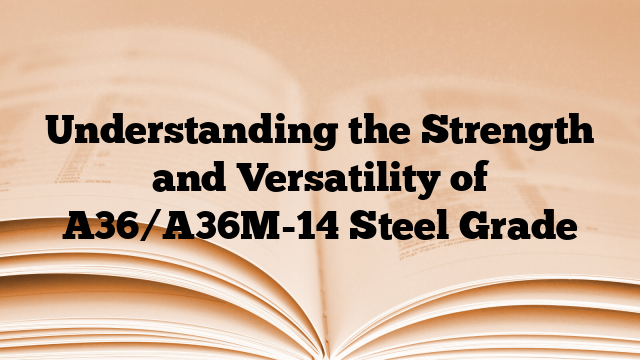The A36/A36M-14 steel grade is a widely used material in various industries due to its strength and versatility. It is a low carbon steel that exhibits good strength and formability. Here are some key details about its chemical composition, mechanical properties, and standards:
Chemical Composition:
– Carbon (C): 0.26% max
– Manganese (Mn): 0.75-1.20%
– Phosphorus (P): 0.04% max
– Sulfur (S): 0.05% max
– Silicon (Si): 0.40% max
– Copper (Cu): 0.20% min (when copper-content specified)
Mechanical Properties:
– Tensile Strength: 400-550 MPa (58-80 ksi)
– Yield Strength: 250 MPa (36 ksi) min
– Elongation in 8 in: 20% min
– Elongation in 2 in: 23% min
– Brinell Hardness: 119-159 (BHN)
Standard Number:
– The A36/A36M-14 steel grade is defined by the ASTM A36/A36M standard. This standard specifies the requirements for carbon structural steel shapes, plates, and bars of structural quality for use in riveted, bolted, or welded construction of bridges and buildings, and for general structural purposes.
Corresponding Equivalent Grades:
– The A36/A36M-14 steel grade has corresponding equivalent grades in other international standards. For example, it is equivalent to EN S275 steel in European standards, GB Q235B steel in Chinese standards, and JIS SS400 steel in Japanese standards.
Overall, the A36/A36M-14 steel grade is highly versatile and widely used due to its good strength, formability, and suitability for various construction and structural applications.

